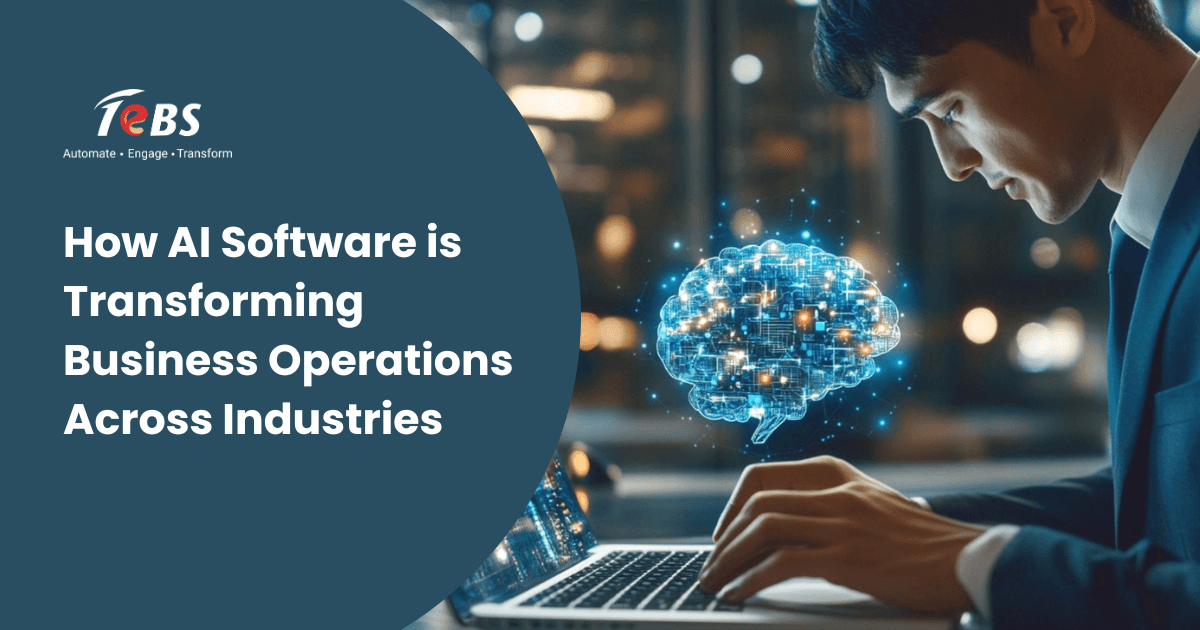The handling and understanding of data have increasingly developed as the volume and complexity of data generated by organizations continues to increase at an unprecedented rate of growth. That being said, traditional approaches to data management often automate workflows and deal with monitored content instead of unstructured content lacking real-time decision-making capabilities. Although AI-powered systems are changing the narrative and what is possible in the realm of data management capture through intelligent organization, sorting, and processing of data helps organizations unlock the knowledge that would otherwise remain unknown. The automation of basic and repetitive tasks, integration of smart search functions, and predicting services convert data into useful resources. Smart document management systems or AI-powered platforms improve the workflow, make collaboration easier, and provide reliable data that improves the accuracy of information across departments.
The Evolution of Data Management
Data management has developed considerably over the years, inspired by the progress in technology and the increasing importance of data in organizational decision-making. Initially, data was managed in physical formats such as paper documents or simple spreadsheets, which were often difficult to find and in danger of errors. As business increased, leading the development of early electronic systems due to the need for better organization and access, such as the file server and underdeveloped database management system (DBMS).
The arrival of the internet and cloud computing brought about a big inning. Data storage became more scalable, and new tools were developed to manage large amounts of data in various systems. This period also saw the rise of the relationship database, which allowed for better data organization, recovery, and management.
However, as the digital age increased, the amount of data increased rapidly. Businesses began collecting unnecessary data, such as documents, emails, and multimedia files, which traditional systems fought for the process. This developed more advanced systems capable of handling diverse data types.
The next development came with the rise of AI and machine learning. These technologies not only enabled the system to store and recover the data but also enabled it to understand, analyze and even predict the trends based on that data. The integration of AI in data management systems has made it possible to automate processes for businesses, highlight hidden insight, and improve the accuracy of data-operated decisions. Today, AI-operated data management systems, such as TeBS Intasenz, are at the forefront of this change and offer the characteristics that simplify management and discovery of knowledge.
Core Features of AI Data Management
AI has introduced several core features that enhance the efficiency and effectiveness of data management, particularly in the context of document management. These features not only improve the way data is stored and retrieved but also optimize workflows and decision-making processes. Some of the key capabilities of AI-powered data management systems include:
1. Intelligent Document Capture
One of the most significant advancements in AI data management is the ability to automatically capture, classify, and index documents from various sources. AI and machine learning technologies can identify relevant data from both structured and unstructured sources, such as emails, scanned documents, and PDFs. This intelligent capture eliminates the need for manual data entry, reducing errors and saving valuable time.
TeBS IntaSenz, for example, utilizes AI to automatically process and organize incoming documents, ensuring that they are classified and indexed correctly. This automation improves the accuracy and speed of document handling, making it easier for organizations to retrieve important information when needed.
2. Enhanced Search and Retrieval
AI-powered data management systems offer advanced search capabilities that make it easier to locate specific documents and data points. Traditional search methods often relied on keywords or basic metadata, which could yield limited results. AI, on the other hand, uses natural language processing (NLP) and machine learning algorithms to understand the context of queries and return more accurate and relevant results.
For instance, TeBS IntaSenz’s advanced search functionality allows users to find documents using full-text search, metadata, or custom tags. This level of precision ensures that users can quickly locate the information they need, improving efficiency and reducing the time spent searching for files.
3. Workflow Automation
AI streamlines document-related processes by automating workflows, such as approvals, reviews, and processing. Manual tasks, such as routing documents for approval or sending reminders, are time-consuming and prone to delays. AI can automate these steps, ensuring that documents move through the workflow seamlessly and efficiently.
With TeBS IntaSenz, workflow automation is built into the document management process, helping businesses reduce turnaround times and improve operational efficiency. Documents are automatically routed to the appropriate individuals for review or approval, reducing the chances of bottlenecks and delays.
4. Secure Storage and Retrieval
As organizations generate more data, security becomes a top priority. AI-powered document management systems offer robust security features to protect sensitive data. These systems use encryption, two-factor authentication, and permission-based access to ensure that only authorized individuals can access or modify documents.
Additionally, version control and check-in/check-out features help maintain document integrity, ensuring that the most up-to-date version is always accessible. With TeBS IntaSenz, businesses can rely on a secure cloud-based repository to store and manage documents, with enterprise-grade security measures that comply with industry standards and regulations.
5. Compliance and Audit Trails
Ensuring compliance with regulatory requirements is another critical aspect of data management. AI-powered systems can help businesses meet compliance standards by providing comprehensive audit trails, which track document activities and changes over time. These audit trails make it easier for organizations to monitor document access, modifications, and approvals, ensuring transparency and accountability.
TeBS IntaSenz offers built-in compliance features, such as audit trails and retention policies, that help businesses maintain compliance with industry regulations. Whether it’s financial, healthcare, or legal compliance, AI-powered systems make it easier for organizations to meet their regulatory obligations without the manual effort typically required.
6. Collaboration and Sharing
AI-driven document management systems enhance collaboration by enabling real-time sharing and editing of documents. Multiple users can collaborate simultaneously on a document, with AI tracking changes and notifying team members of updates. This level of collaboration fosters teamwork and ensures that everyone is working with the latest version of a document.
With TeBS IntaSenz, users can collaborate efficiently through version control, document sharing, and real-time editing, all while maintaining document security and integrity.
Looking Ahead: The Future of AI Data Management
The future of AI data management is promising, with new advancements continuously reshaping how businesses manage and discover knowledge. As AI technologies evolve, we can expect even more sophisticated tools for analyzing data, predicting trends, and automating processes. The integration of AI with emerging technologies such as the Internet of Things (IoT), blockchain, and augmented reality will further enhance the capabilities of data management systems.
One area where AI will have a significant impact is predictive analytics. By analyzing historical data and recognizing patterns, AI can help businesses make better predictions and anticipate future trends. This capability will be particularly valuable for industries such as healthcare, finance, and manufacturing, where anticipating market shifts or customer needs can provide a competitive advantage.
Additionally, as AI continues to learn and improve over time, data management systems will become even more intuitive, with greater customization options. Businesses will be able to tailor their AI systems to their specific needs, improving efficiency and supporting more personalized customer experiences.
Conclusion
AI-powered data management is revolutionizing the way organizations handle and discover knowledge. By automating processes, enhancing search and retrieval capabilities, and ensuring security and compliance, AI is helping businesses operate more efficiently and make better-informed decisions. As we look to the future, AI will continue to drive innovation in data management, unlocking new opportunities for organizations to leverage their data for competitive advantage.
If you’re ready to elevate your organization’s data management capabilities, contact us at [email protected] to learn more about how TeBS Document Management System and IntaSenz platform can streamline your document processes, improve collaboration, and ensure compliance. Let’s work together to supercharge your knowledge discovery with the power of AI!





